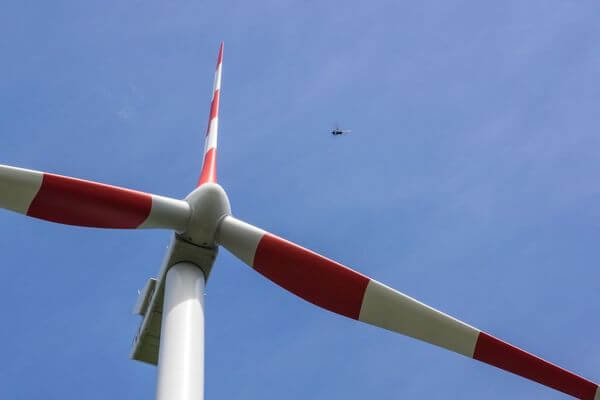News Release from windfair.net
Wind Industry Profile of
At The Limit: Drone Pilots Are Conquering Wind Industry
Transfer of Experience
The UK-based company has many years of experience in oil and gas industry inspections. For some time now, renewable energies have also been playing an increasingly important role in Cyberhawk's portfolio. Only two days ago a further major order was announced: One of the UK's major renewable energy operators has signed a three-year contract with Cyberhawk to have its entire wind farm network inspected by the company's drones.
Chris Fleming, CEO of Cyberhawk, points out that he sees the future in renewables: “We continue to make great inroads in renewable energy as a result of our UAV data collection and asset management software, iHawk. We are experiencing an increase of work in this sector which is highlighted by this recent framework award, and will continue to work closely with renewable energy suppliers around the globe to develop solutions which meet their needs.”
Various fields of application
Cyberhawk's customers include some of the largest players in wind industry, including Siemens Gamesa and Vestas. Besides spotting rust spots in the towers, erosion at the edges of the rotor blades or paint flakes, curiosities are sometimes found during inspections. „I even discovered bullet holes in a tower," says drone pilot Lukas Kremkau from SPECTAIR in Germany. In addition to the inspection of the wind turbines themselves, inspections of pylons and power lines are also included in the ever-expanding list of work. In addition, there are applications in extreme environments: Inspections of converter stations and transformer substations of offshore wind farms on the open sea become more frequent.
Life at the limit
Work is not always easy, as Calum, a Cyberhawk drone pilot, tells us. Working 14 days at a stretch in extreme weather conditions all over the world, then back home for a few days to change gear and directly heading back on the next tour. "It is hard work due to strict safety procedures, long days and the added pressure of flying close to dangerous and very expensive assets.“
Flying in an industrial environment involves proximity to large metallic structures or high voltages, which means that the pilot must be able to fly the drone completely manually. And usually without flight assistance functions such as GPS, since this may not work in those extreme environments. Combined with fast changing weather conditions, offshore wind turbines in particular demand maximum precision when flying.

Aero Enterprise's SensorCopter at work (Image: Aero Enterprise)
Training paired with experience
Appropriate training is of course a must. This includes a drone driving licence, which has been compulsory in Germany since last year. Other countries are already further along: In Austria, depending on the weight class of the drone, it has been mandatory since 2014, says specialist Aero Enterprise on their homepage. Depending on the area of application, further controls are added, such as the permitted flight altitude or the speed at which the aircraft is flown. In some cases, this may require the approval of the relevant aviation authority.
Nevertheless, drone pilots make work easier for the industry: under good conditions, drones can inspect two to four wind turbines a day. A worker who has to lower himself down on a rope on each rotor blade individually not only runs a greater personal safety risk, but also needs much longer. And in the wind energy sector, time is money.
Cyberhawk's video offers impressions of life as a drone pilot:
- Author:
- Katrin Radtke
- Email:
- press@windfair.net
- Keywords:
- drone, Cyberhawk, Aero Enterprise, inspection, onshore, offshore, training, licence



























